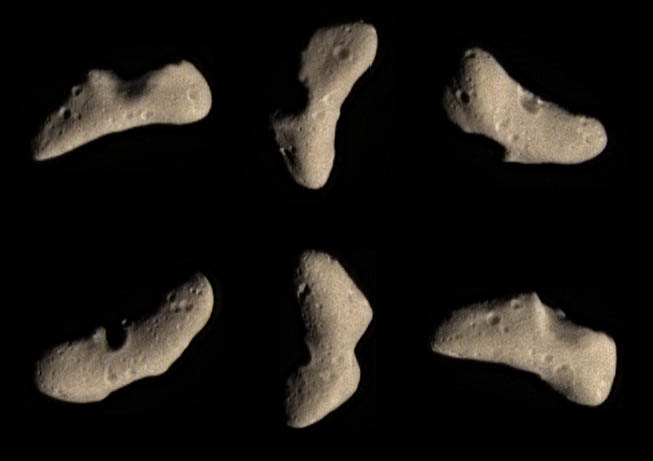
Caption: Images of 433 Eros from the NEAR spacecraft (1996--2001), 2000 Feb12.
Features:
- Eros is approximately 33x13x13 km
and we are viewing it
from about 1800 km away.
- The sequence of images covers 5.5 hours and shows
Eros
in approximately true color.
- The NEAR spacecraft (1996--2001)
went into orbit around
Eros and landed on it
as the final act of its mission.
- You can see that the surface is cratered, but smoothish.
It has probably been pulverized to
regolith:
slippery, glassy dust with pebbles and rocks of various sizes????.
- Eros, discovered in
1898, is a
NEA (near-Earth asteroid).
It's semi-major axis is 1.458 AU and it has eccentricity 0.223 (Cox-319).
- Because
Eros is named for a
love god,
many of the features on
Eros have all been named for
famous/infamous lovers:
Orpheus & Eurydice
(before 1200 BCE in legend),
Genji (Tale of Genji, before 1021),
Don Quixote & Dulcinea
(Don Quixote, 1605, 1615),
Don Juan (from 1630 onward),
Casanova (1725--1798),
Catherine & Heathcliff
(Wuthering Heights, 1847),
and
Lolita (Lolita, 1955).
For the locations of features with these
names, see
Views
of the Solar System: Cylindrical Projection
Map of Eros by Grant L. Hutchison.
Download site: Views of the Solar System by Calvin J. Hamilton.
Image link: Itself.
Local file: local link: 433_eros.html.
File: Asteroid file: 433_eros.html.